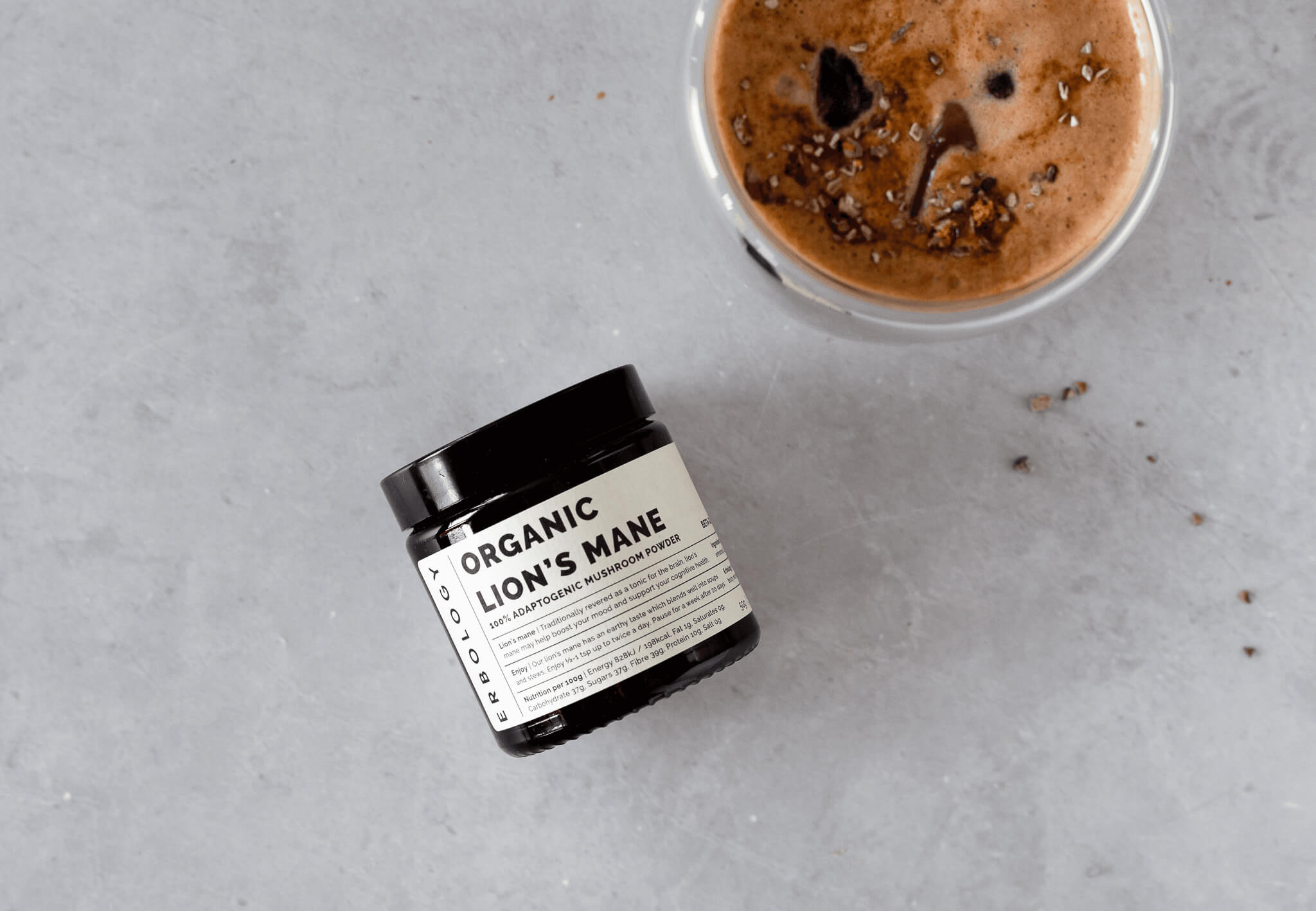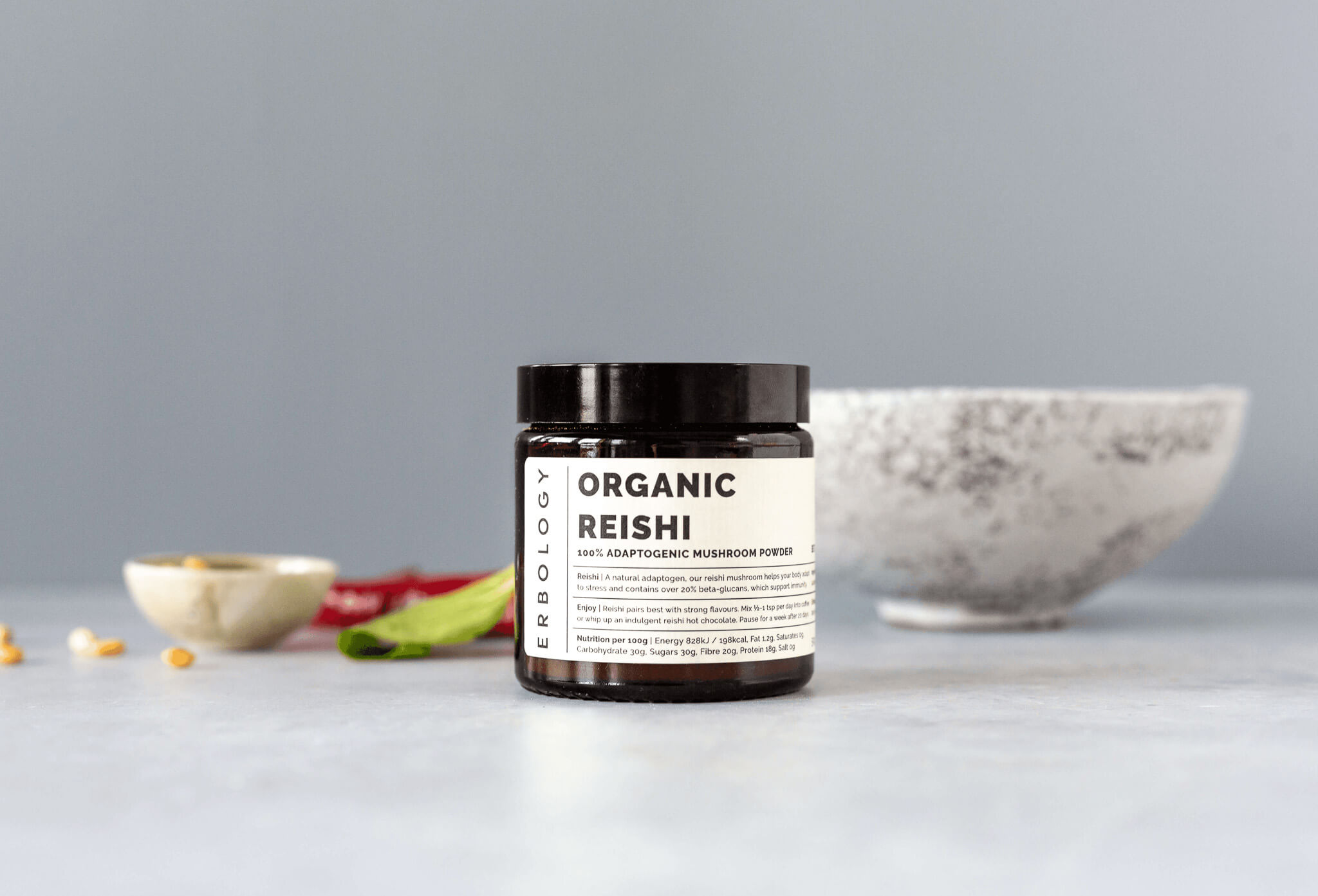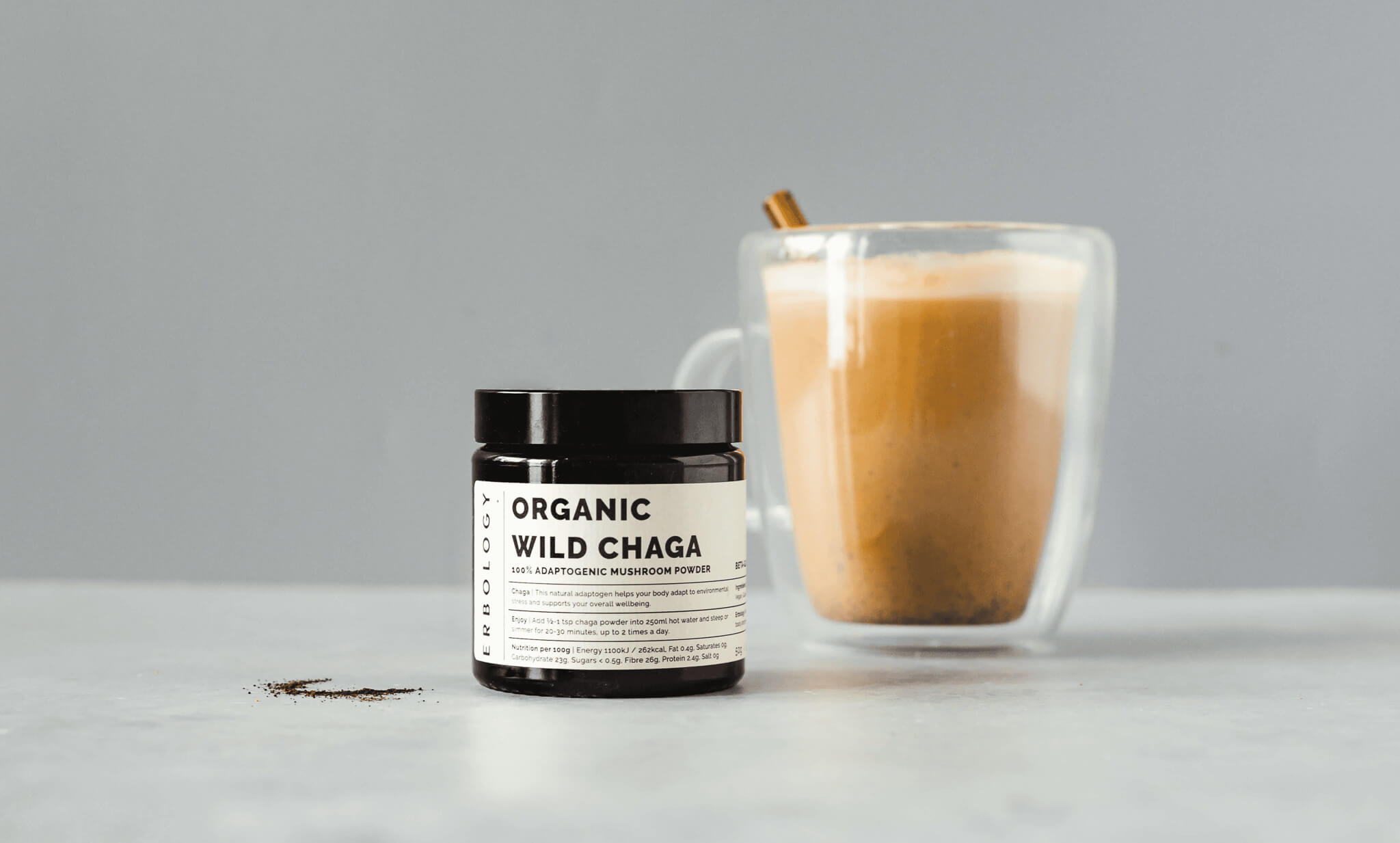31 Aug 2021
Chaga mushroom benefits
What is chaga?
Chaga is a fungus which grows on the bark of trees. In particular, a hopeful forager can find it clinging to birch trees in cold climates. Its Latin name is Inonotus obliquus.
So prized is this fungus that people in some parts of the world call it ‘black gold’ or ‘diamond of the forest'.(1)
While it doesn’t have the same natural beauty as medicinal mushrooms such as reishi or turkey tail, it more than makes up for it appearance with its health benefits!
Chaga has been a traditional remedy for centuries, particularly in areas such as Sibera in Russia.(2) Scientists in the modern day are also very interested in chaga for its medicinal qualities.
How to spot chaga
If you’re an avid forager and you’re lucky enough to live in climes where chaga flourishes, you may be able to spot one for yourself.
Firstly, aim for the birch trees; this is chaga’s preferred host, although you may also spot it on elm or beech trees.
Chaga looks like a black protuberance on the bark of the tree. To the untrained eye, it looks like any other tree burl (a rather pretty whorl of unusually textured bark which the tree grows through stress or other factors). However, a closer look will swiftly reveal if you’ve uncovered some ‘black gold’ for yourself.
The outside of the mushroom has the appearance and colour of brittle charcoal. However, if you cut into it, you’ll find a golden-orange interior with the texture of a piece of cork.(3)
Many people regularly go on the hunt for chaga and over-harvesting can be an issue. Similarly, if you cut into a tree burl in search of chaga, you can also damage the tree itself, leaving it open to infections.
This is not to mention the risks of going mushroom foraging if you don’t have much experience. Some mushrooms are poisonous and can do you a lot of harm if you misidentify them. Best to stick with an expert, or source your chaga in powder form from a reputable source.
![]()
Chaga in traditional medicine
Humans have been using chaga to heal and nourish ourselves for a very long time. In fact, Hippocrates included it in his ‘Corpus Hippocratium’! He would make infusions with chaga and use them to wash people’s wounds.(4)
Eastern European medicine also has a special place for chaga, where it has been used since the 12th century.
However the people of Siberia must be among chaga’s biggest and most loyal fans. They use chaga for an enormous number of applications. These include using it as an anti-inflammatory, anti-parasitic medicine, for gastrointestinal problems and for diseases of the liver and heart.(4)
What the heck is a ‘sclerotium’?
If you have been researching chaga, you will doubtless have come across the term ‘sclerotium’ (or its plural, ‘sclerotia’). For those of us without a specialist knowledge of fungi, it’s useful to explain what it refers to.
When we think of a ‘normal’ mushroom, we think of the shape we normally find at the grocer’s. It has a stem, crowned by a little semi-spherical cap.
However, we’ve slightly mixed up our mushroom terminology over the years!
A fungus is made up of the following parts:
- The mycelium: these are the thready , wispy tendrils which act a bit like the fungus’s roots.
- The fruiting body: this is cap of the fungus. Technically speaking, this is the only part we can correctly call a ‘mushroom’!
- The spores: these are tiny particles present inside the fruiting body. They are released through pores or gills and allow the fungus to reproduce.
- Secondary metabolites: once they reach maturity, fungi produce these special chemical compounds. A lot of the interest in the medicinal properties of fungi centres around these.
Unlike other mushrooms, chaga doesn’t produce a cap. What you see on the tree is actually a mass of hardened mycelia, called a sclerotium. Rather than calling it a mushroom, experts refer to what you can see on the tree as a ‘conk’.
Chaga mushroom benefits
So, what does modern science have to say about chaga mushroom’s health benefits? Do they bear out the wisdom of traditional Siberian medicine?
Let’s take a look at the properties of chaga which are attracting attention from experts today.
It’s important to say that research into chaga is still a fairly young field, despite its long history of traditional use. Therefore, quite a few of the available studies have been conducted on mice rather than humans.
Chaga is a potent antioxidant
Compounds found in chaga have the ability to defend cells against damage caused by free radicals.(4)
Chaga contains both special polysaccharides and chemicals called phenols which have an antioxidant effect.
Extracts from chaga also seem to be able to slow the production of Reactive Oxygen Species (ROS), a type of free radical, in healthy cells. Curiously, the opposite is true in cancer cells, where the quantity of ROS seems to increase.(4)
Thanks to its powerful antioxidant effects, scientists are investigating compounds from chaga as potential treatments for neurodegenerative conditions. These include Alzheimer’s and Parkinson’s diseases.
It may boost your immune system
A fascinating study from 2005 looked at chaga’s ability to support our immunity. In it, the authors describe how, when patients are undergoing chemotherapy or radiotherapy for cancer, their immune systems are often depleted.
This is because the two therapies cause damage to existing immune cells. But they can also harm stem cells in the bone marrow which will eventually turn into immune cells.
Patients who have a higher level of stem cells remaining after treatment are more likely to recover quickly. Therefore it’s important to do everything possible to protect them during treatment.
The study found that chemical-treated mice who consumed chaga extract showed similar signs of bone marrow health as healthy mice. Similarly, they produced more special proteins (called cytokines) which stimulate stem cell recovery following bone marrow damage.(5)
While more research is needed, the scientists who conducted the study think that chaga could be useful as a Biological Response Modifier (in this case, an ‘immunity-protector’) for people with compromised immune systems.
In addition, chaga contains special polysaccharides called beta-glucans which are known to have a regulating effect on the immune system.(6)
Related reading
undefined

Organic Cordyceps Mushroom Powder

Organic Lion's Mane Mushroom Powder

Organic Reishi Mushroom Powder
